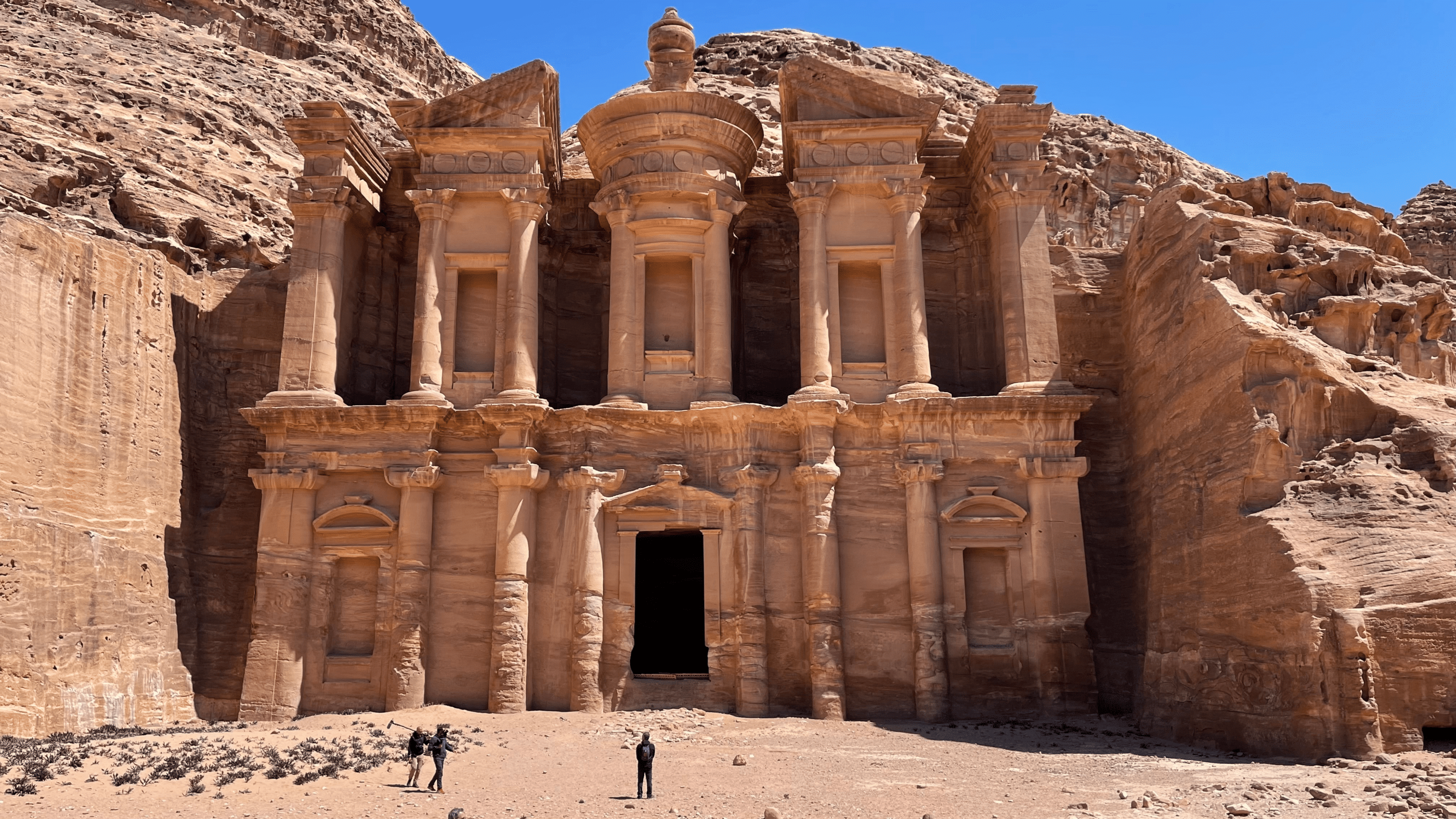Byzantine Petra
by Alaa Ababneh, PhD Candidate at Universidad Autónoma de Barcelona
By the 4th century CE, the Roman Empire had embraced Christianity, with Constantinople as its new capital. While the western half of the empire collapsed under barbarian invasions, the Eastern Roman (Byzantine) Empire endured for another thousand years. Petra became part of this eastern realm and served as the capital of the Byzantine province of Palaestina III Salutaris.
During this era, many Nabataeans converted to Christianity, and Petra emerged as a center of Christian life. Several churches were built in the city, the most notable being the Byzantine Church, constructed in the 5th century. Its floors are covered with stunning mosaics depicting plants, animals, and geometric designs. A remarkable discovery was made during excavations in 1993, when over 100 papyrus scrolls were found preserved in the church after being carbonized in a fire. These documents record the personal and legal affairs of a wealthy Nabataean family, offering a rare glimpse into life in Byzantine Petra.
In 551 CE, a devastating earthquake struck Petra, destroying much of the city’s architecture and crippling its sophisticated water management system. The disaster, combined with shifting trade routes that bypassed Petra, led to the city’s decline. By the time of the Muslim conquests in the 7th century, Petra was largely abandoned, its once-grand monuments and churches falling into ruin.
Today, the remains of Petra’s Christian monuments, especially the Byzantine Church and its mosaics, demonstrate how the city became part of the Byzantine world. They reveal a blend of local Nabataean traditions with wider Mediterranean cultural and religious influences, showing how Petra’s identity evolved from a Nabataean capital into a Christian center of late antiquity.
Bibliography:
- Bikai, Patricia Maynor. (2002). “The Churches of Byzantine Petra.” Near Eastern Archaeology 65, no. 4: 271–76. https://www.jstor.org/stable/3210859
- Joukowsky, Martha Sharp. (1999). “A Brief History of Petra.” Brown University. https://www.brown.edu/Departments/Joukowsky_Institute/Petra/excavations/history.html
- Lehtinen, Marjo. (2002). “Petra Papyri.” Near Eastern Archaeology 65, no. 4: 277–78. https://www.jstor.org/stable/3210860
- Peterman, Glen. (1994). “Conservation of the Petra Papyri.” The Biblical Archaeologist 57, no. 4: 242–43. https://www.jstor.org/stable/3210435
- “The Ancient City of Petra.” The American Museum of Natural History. https://www.amnh.org/explore/ology/archaeology/the-ancient-city-of-petra2
- Ward, Walter D. (2012). “In the Province Recently Called Palestine Salutaris: Provincial Changes in Palestine and Arabia in the Late Third and Fourth Centuries C.E.” Zeitschrift Für Papyrologie Und Epigraphik 181: 289–302. http://www.jstor.org/stable/41616986
This content is brought to you by The American Institute for Roman Culture, a 501(C)3 US Non-Profit Organization.
Please support our mission to aid learning and understanding of ancient Rome through free-to-access content by donating today.
Cite This Page
Cite this page as: Alaa Ababneh, “Byzantine Petra,” Ancient Rome Live. Last modified 9/05/2025. https://ancientromelive.org/byzantine-petra
License
Created by The American Institute of Roman Culture, published on 9/05/2025 under the following license: Creative Commons: Attribution-NonCommercial-ShareAlike. This license lets others remix, tweak, and build upon this content non-commercially, as long as they credit the author and license their new creations under the identical terms. Please note that content linked from this page may have different licensing terms.



